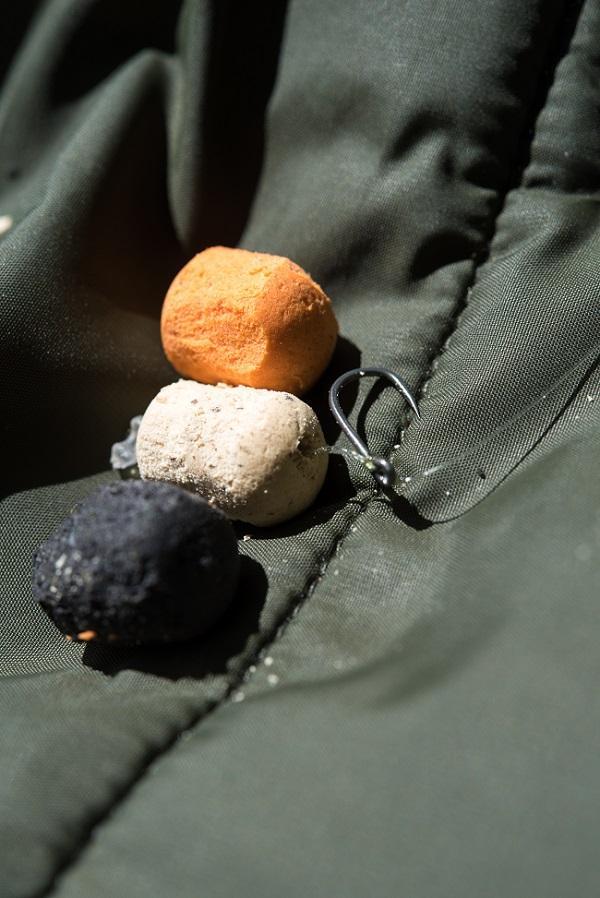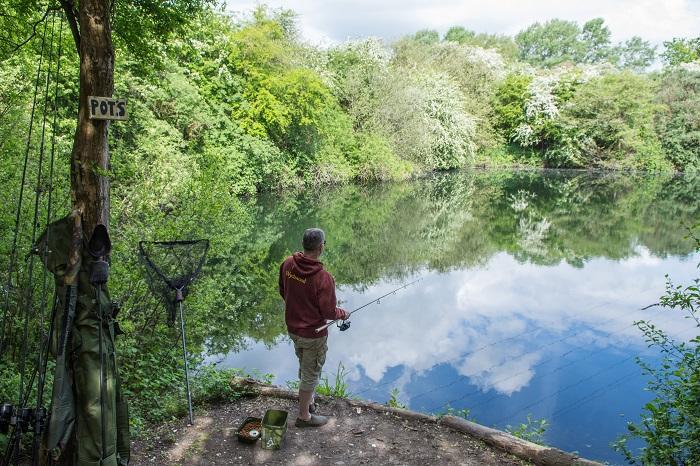Surface fishing for carp is one of the most thrilling ways to fish, but it can take a fair amount of patience and cunning.
Polarising sunglasses are essential for spotting fish
Unlike most other aspects of carp fishing, location should be the easiest part of the jigsaw. If carp are in the upper layers of the water then they’re generally easy to find. A good pair of polarising sunglasses is probably the most essential piece of kit to help you spot them.

Build up the carp’s confidence by introducing some freebies before casting in
Once you have found the fish, one of the key rules of surface fishing for carp is not to rush. Assess the situation first – how many fish are present, are they patrolling in a certain way, are they already taking natural food off the surface, are there any particular fish you would want to target, how easy is it to reach them…all these questions are worth analysing before you spring into action. The accepted rule with floater fishing for carp is that they become far, far easier to catch if you’ve already built up their confidence by feeding them first without a line in the water. There are no hard-and-fast rules in carp fishing, but this is about as close as you can get to one, so always bring loosefeed with you.
Floating pellets can be a deadly alternative to mixers or bread
Many wise and pressured carp will be suspicious of mixers, pieces of bread and other familiar floating freebies, so a good alternative is to use much smaller floating pellets of just a couple of millimetres in diameter. When carp anglers first cottoned on to the effectiveness of much smaller floaters the results were incredible (Adam Penning ripped up the Linear complex in the late 1990s on just such a tactic), and they still work very well today.

Smaller surface baits are harder for the birds to spot
An added bonus of using smaller free offerings is that they are much harder for the birds to spot. Of course, most floater-fishing sessions are partly a battle with gulls, but there are some things you can do to tip the odds in your favour. These swooping pests, and larger birdlife like ducks, swans and geese, can be ‘fed off’ away from your swim. A loaf or two of cheap bread will keep the large birds occupied (and they’ll often waddle off for a nap once sated), while gulls don’t need too many traditional mixers to become full.
Soak your baits in oil for added attraction
Also on the bait front, oils are a massive help when targeting surface carp. Dosing your free offerings in hemp oil or even just sunflower oil can be an attractive additive, but it will also help flatten off the surface ripple, making it easier for you to see what’s going on.
Freelining is ideal for close range carp but a float is required to cast further
Assuming you’ve kept the birds at bay and got the fish chomping on your floating free offerings then it’s time to rig up and cast out. There are many ways to present a surface hookbait, and different anglers swear by different setups, but your initial choice will be between a freeline arrangement and using a float. Freelining is simple and doesn’t introduce another suspicious object into the water (the float), but your casting range is obviously severely limited.
A correctly set up float will act like a bolt rig
With a float, you add extra weight and can cast much further. The float can also act a bit like a bolt rig at longer range, helping you to set the hook before you strike.

Casting beyond a group of fish can be a canny tactic. The splash shouldn’t scare them and you can then inch your rig back into position near the fish.
You’ll need a long hooklink to keep the separation between your float and hooklink, and it’s best to use a buoyant mono or fluorocarbon to avoid dragging your hookbait down. A fine smear of Vaseline on your hooklink (and on a few feet of line behind your float) can really help aid its buoyancy.
Pop up boilies and plastic mixers make durable hookbaits
At the hook end, you’ll likely want a durable hookbait to withstand regularly recasting. Pop-up boilies and plastic mixers are great, or you can use a tough hookable floater that many companies now produce. If you opt for a hair rig, keep the hair very short, so the hook and bait sit as one. Carp on the surface are adept at spotting anything that isn’t quite right, so a big separation between hook and bait won’t cut it.

A hookbait that behaves like a free offering will maximise your chances
Getting your hookbait to sit just like your freebies can also be crucial. Some hookbaits can actually be too buoyant, and wary carp will know that something isn’t right if it takes them more suction to pull it into their mouths. They may also spot that it sits slightly prouder of the surface layer than the freebies.
Some hooking arrangements use a counter-weighted hookbait that flips the hook ‘on its back’ and out of the water, and these can be very effective. Top surface anglers have also been known to paint their exposed hooks white, so they blend in with the sky as the carp is looking up at them.

Even with a float you’ll need to strike to set the hook
Even with a hefty float, you’ll still need to strike and set the hook when surface fishing for carp. For carp anglers used to sitting behind bite alarms and bolt rigs, this can be a fairly new experience. You will pull out of fish, no matter what you do, so learn from your mistakes and don’t panic when a big set of lips slurps down your hookbait.
In terms of general tackle, you can surface fish with any carp rod, but one designed for such applications will be better. These floater rods are softer and more forgiving, giving you a much better balance with thinner lines and weaker hooklinks. If you plan to surface fish a lot, then investing in a lighter reel can also be a godsend on long, hot summer days.




